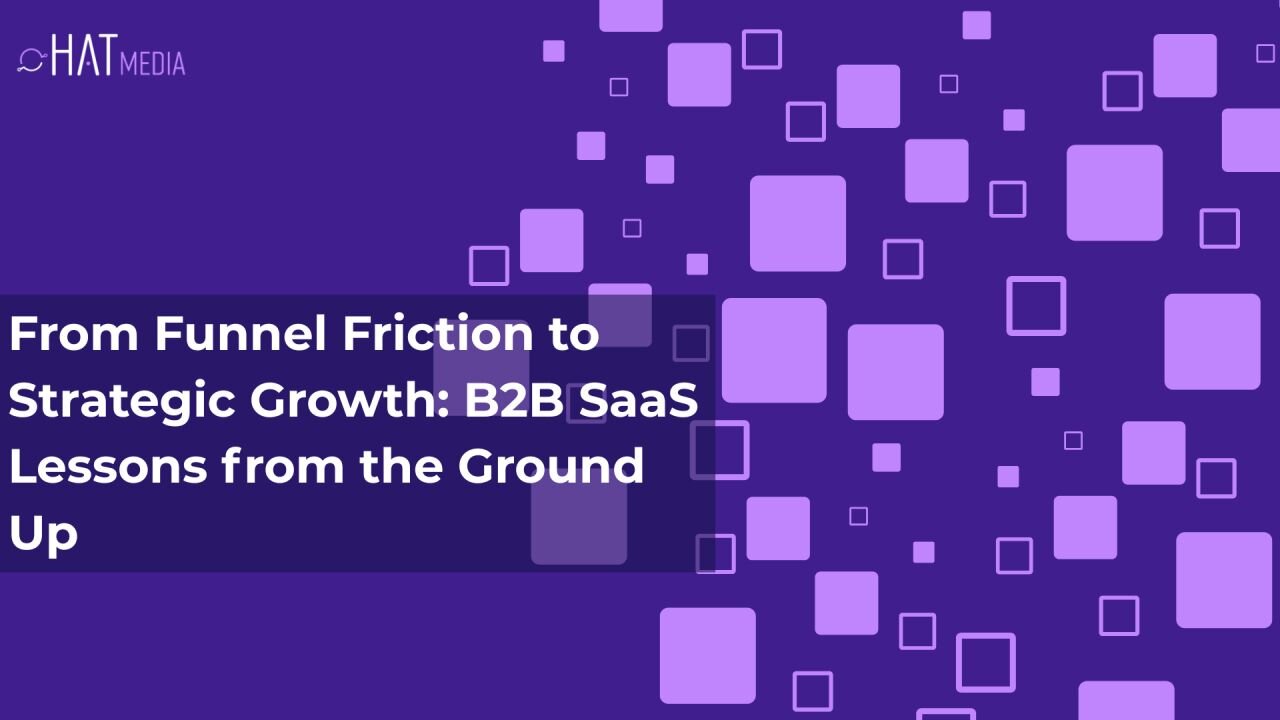Turning Brand From Art Into Science: What We Learned About Modern Brand Tracking

If you run marketing inside a SaaS company, you have probably felt the tension between what you can measure today and what actually moves the market over months and years. Performance campaigns report clean numbers. Brand work often does not. In our latest SaaS Stories conversation, Stephanie Clapham, Director of Research at Latana, unpacked how next generation brand tracking is closing that gap. Rather than write a guest profile, this piece distills the practical takeaways you can apply right now, whether you are the first marketer at an early stage startup or leading a mature B2B team across regions.
Why classic brand tracking keeps failing modern teams
Most brand trackers were designed for a world of slow research cycles, email panels, long surveys and tidy quarterly decks. They break down in a market that moves by the week and where decision makers live on mobile. The cost is not only money. It is missed signals. When your tracker cannot reliably reach the audience you care about, or when you are forced to treat each wave of data like an isolated event, you end up debating data quality instead of decisions.
Stephanie’s core critique is simple. Traditional systems make brand measurement feel like an art because the methods are outdated. You see it in three chronic symptoms. Access to the right respondents is limited. Samples are too small or too arbitrary to support segmentation. Confidence intervals are ignored, so teams overread noisy movements. The result is a dashboard that looks neat but struggles to guide where to invest.
Listen to the full conversation
We go deeper on each of these points in the episode, including concrete examples of ad based sampling design, why modular trackers outperform kitchen sink approaches, and how to use confidence intervals in stakeholder meetings without losing the room.
Start with the foundations that actually predict growth
Every category is different, but the physiological needs of a brand are familiar. Track awareness, perception, consideration and preference among the specific audience you serve. That audience choice matters as much as the metrics themselves. It determines whether the numbers reflect your market position or the opinions of people who were easy to reach.
Do not try to measure everything in one instrument. Long trackers are the enemy of good data and respondent goodwill. Lock the core health metrics on a consistent cadence. Then answer bigger questions with targeted dips. This modular approach keeps the pulse steady while letting you explore new hypotheses without bloating the base study.
Treat reliability like a requirement, not a nice to have
Teams often cling to round sample size targets. It feels concrete to say we need 400 completes per market. The better question is what margin of error are we willing to live with on the decision we are about to make. If you plan to slice by role, company size and region, the headline sample number becomes irrelevant unless you can show acceptable confidence at the segment level. Build your plan around margins of error and confidence intervals. Label them clearly on every chart. It changes the quality of the conversation in rooms where budget is allocated.
Trust is now a brand metric and a research requirement
Consumer trust has been eroding for years across sectors. That impacts how buyers receive your message. It also impacts how your team should treat research inputs. If stakeholders doubt the methods, they will not act on the insights. That is why data collection design is strategic. Meeting respondents where they already are, rather than coaxing them through a twenty minute panel survey, increases authenticity. Cleaning data with behavior based quality scores reduces fraud while preserving real voices. When the inputs are trustworthy, you can talk about brand truth instead of data caveats.
Brand tracking is not only for acquisition
In SaaS, the revenue story is dominated by expansion and retention. Brand shows up there as well. Perception, consideration and preference within your installed base are leading indicators of renewal risk and upsell potential. If your tracker cannot reflect movement among your customers and priority subsegments, it is missing the arena where most of your long term revenue lives. Deep segmentation is the unlock. You need to combine multiple traits in one view without collapsing reliability. Methods like multilevel regression with post stratification, the Bayesian workhorse behind Latana’s approach, are one way teams are solving that problem.
How to begin when you are early and budget constrained
You do not need a complex program to get value. Start small and correct. Define the audience that matters. Fix a clean set of health metrics. Include your closest competitors to establish context. Keep your instrument short, mobile native and consistent. If you are working with a partner, prioritize their ability to reach your audience, quantify uncertainty and adapt as you learn. If you are doing it in house, be honest about the setup load. Sampling frameworks, survey design and quality controls can consume more time than expected and errors compound quickly. Early discipline beats big budgets that arrive later.
Where AI already helps, and where to stay skeptical
AI is not a magic wand, but it is useful in three places today. First is modeling. Treating waves as related rather than isolated lets you form a coherent narrative over time and stabilize estimates. Second is data quality. Using machine learning to score respondents on multiple behavioral signals improves the balance between overcleaning and letting bots through. Third is speed to insight. Natural language retrieval against your own dataset and automated insight decks cut the time from fieldwork to action.
Skepticism is healthy in two places. Fraud is rising because bad actors use AI too. If your quality systems are static, you will lose ground. And instantaneous answers are only helpful if the inputs and uncertainty are visible. Fast and wrong is worse than slow and right.
What will change over the next three to five years
Panels will represent less of the population that many brands need to reach. Gen Z does not live in inboxes waiting for survey invites. Ad based sampling that meets people on mobile, inside their natural media patterns, will become the norm. Demand for near real time reads will rise, which will push teams to automate insight generation and to treat trackers as living systems rather than quarterly rituals. The bar for verifying respondents will keep climbing, which means fraud detection will move from a checkbox to an ongoing arms race. Through it all, the brands that win will pair better methods with better questions.
A practical way to apply this next week
Audit your tracker or brand health reporting with four prompts. Are we measuring the audience we sell to, not just the one we can afford to reach. Are awareness, perception, consideration and preference tracked regularly, with margins of error presented on every view. Is our instrument short enough that we would happily take it ourselves on a phone. Do we know which segments we can cut reliably and which we cannot.
If you find gaps, pick one to fix in your next cycle. Replace sample size targets with margin of error targets for your primary audience. Remove questions from the base study and move them to a dip. Add competitor reads if you lack context. None of these require a rebrand of your research program. They simply make it useful.
